Today in the Many Hats Club, I was asked to explain the wave particle duality in terms of quantum computing for a high school student.
Needless to say... #bestrequestever

The wave particle duality, in the simplest of terms, is a way for us humans to wrap our brains around the fundamental nature of physical reality.
The best place to start is with a simple assumption. All of matter, all physical substances, are made of atoms, and atoms vibrate. All of existence is constant motion.

Every part of the universe is in constant motion.
I'm sure you've studied light, and you have some understanding of how light is a wave, and different wavelengths (in the visible spectrum) are different colors. And you understand, I'm sure, that when you boil a cup of water, the atoms that make up H2O (water) are constantly vibrating, and applying heat "excites" the atoms and they vibrate more
More vibration at an atomic level is roughly analogous to how hot the substance is.
So, everything is in motion. Light, water, physical objects. At an atomic level, there are all these particles and they are moving. That is the basic foundation we need to understand before tackling the wave/particle duality.
But what we (as humans) are able to observe, even with the most sensitive equipment, are not the "Lego blocks of reality," but rather the symptoms or effects that the Lego blocks of reality have on what we are able to observe. It's like watching a cat playing underneath a blanket. We are seeing the lumpy surface moving, but we can't see under the blanket.
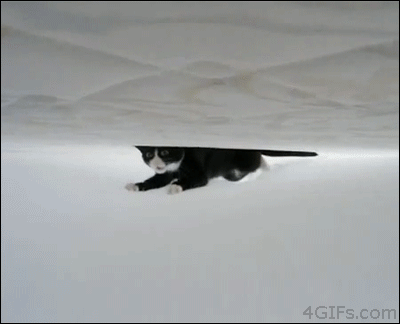
This is where mathematics comes in. By looking at the effects or "symptoms" of the Lego blocks of reality (quantum particles) as they move and interact with each other, we can establish certain mathematical relationships that give us insight and ideas about the nature of those building blocks.
This is why every high school teacher will try to tell you about the famous "double slit" experiment. But not everyone (not even the teachers) really understands it or what it meant in the context of scientific advancement and the development of quantum computing.
So Einstein and his contemporaries (Schrodinger among them) were looking at light, and how light behaves and responds in different situations, and they were trying to come up with mathematical ways to describe the behavior they were observing.

If you can describe something mathematically, then that behavior becomes predictable, and when a behavior is both understood and predictable, you can build something useful.
So in certain situations, physicists observed the behavior of light best "described" and predicted by imaging light as a constant stream of little particles. Little balls of light-substance, flying through the air. Sometimes the math "worked" (could successfully predict behavior) if they used the mathematics of particle behavior.
But in different situations (different experiments) that "particle math" didn't work at all. You could crunch the math, and think "okay.... ___ is what should happen when we do __" and you'd do the experiment and the results flipped you the bird.

"WTF" moments are surprisingly common in the history of science.
However it was soon apparent that light is still predictable. Even when it behaved in a totally WTF way, there was a pattern. There was logic. But the mathematical "description" that would allow a scientist to predict that "WTF" behavior was the mathematical description of a wave on a string (think jump rope).
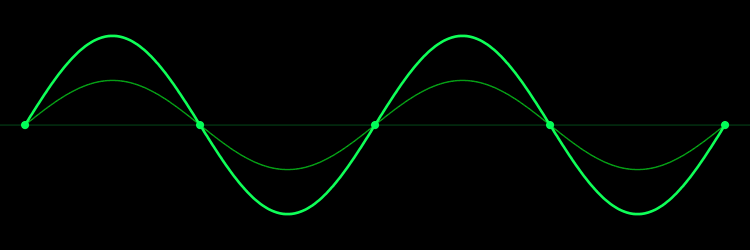
So physicists realized that they were looking at "something" that was the fundamental Lego building block of what we humans see as "light." And sometimes that "something" was predictable using mathematical models that treated it as a particle, and sometimes that "something" was predictable using mathematical models that treated it as a wave.
Now, Schrodinger actually thought this was ridiculous.
If science was unable to accurately "describe" and predict the behavior of light as ONLY a particle or a wave, then clearly we must be missing something.
And Schrodinger came up with his famous thought experiment as an example to point out how fucking ridiculous this all was. The point of "Schrodinger's Cat" was to tell his colleagues (other physicists) that they were groping around a dark room with mittens on their hands and grabbing onto something they couldn't see or fully understand. And attempting to impose preconceived notions of "particle" behavior and "wave" behavior at the same time was... well... idiotic...
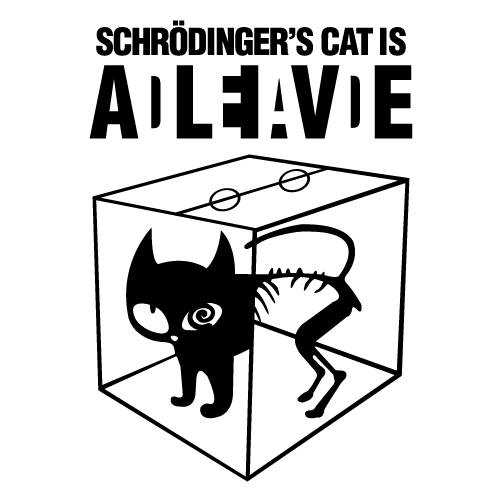
But as time went on, and the mathematics proved to be reliable, over and over and over again, in predicting light's behavior as BOTH a particle and a wave.
Scientists began to accept that even though we don't know for sure what that mysterious object is under the blanket (returning to the analogy of watching a cat playing underneath your blanket when you're trying to make the bed), as long as we can successfully predict its behavior with mathematical models we have, no matter how strange it seems, we should move forward with those weird observations and see what we can build/understand about the universe.
And this is where Schrodinger's actual equation comes in. And differential calculus is necessary for me to get much more detailed.
Now, this whole time I've been talking about light. But this discussion really applies to every sub-atomic particle. Welcome to the Subatomic Zoo!

In Chemistry you've learned about the table of elements, and you've learned that water is made up of water molecules, and the water molecule is made up of two Hydrogen atoms and one Oxygen atom. Now, what is an atom made of? And what's the difference between different types of atoms?
Atoms are like little tiny solar systems. There is a "sun" at the center, and teeny tiny "planets" whizzing around like crazy, orbiting the "sun." The "sun" is the core of the atom, and it's made up of protons and neutrons, all clumped together like some caramel corn that got stuck together at the bottom of the bag.
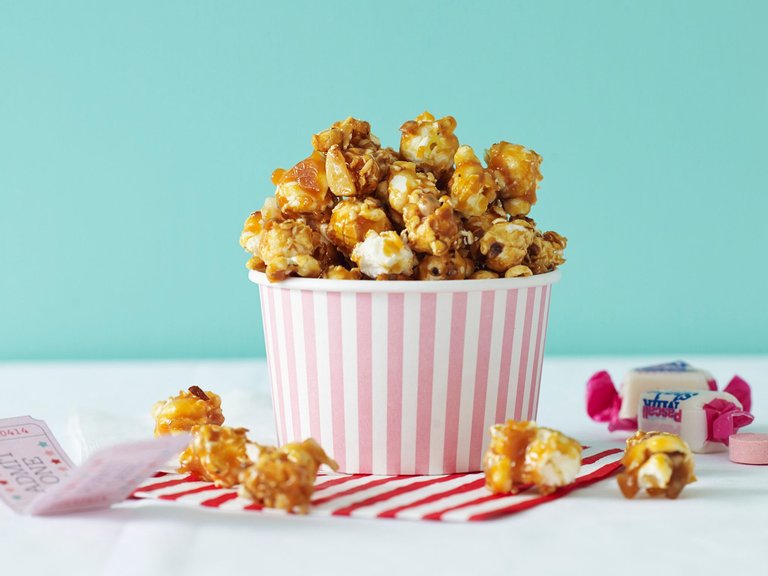
Physics is delicious
The "planets" are electrons. The number of protons/neutrons are at the core, and the number of electrons whizzing around in orbit are what change the "type" of atom. This is basic stuff, but it's important you keep it pictured in your head.
Now it gets complicated.
Electrons, neutrons and protons are all subatomic "particles" in the sense that scientists can "describe" their behavior mathematically and can use math to predict how those "particles" will play with other particles.
Let's take an electron. In certain experiments, an electron will react and respond in a way that is predictable using those same mathematical equations used to predict the particle behavior of light. And sometimes, those same mathematical equations can't predict jack. Because the electron when poked and prodded in a different way, behaves like a wave.

This is where Schrodinger's equation really comes into it's own. Schrodinger realized that if he used differential calculus to "describe" the much simpler physical behavior of a ball on a pool table (or billiards depending on where you're from) and also use differential calculus to "describe" the much simpler physical behavior of a bead on a jump rope when kids are playing --- the equations actually connect.
Suddenly, the math makes sense. And it is possible for a "particle" to be both a particle and a wave, at the same time.
This is a really good article that starts simple, and explains it clearly: https://plus.maths.org/content/schrodinger-1
Now, quantum computing relies on something called quantum entanglement, which builds on the idea of the wave particle duality, and becomes really interesting.

The one thing you need to remember is that we do not possess the technology to "see" sub atomic particles, much less to "see" what those subatomic particles are made of themselves, So all scientists can do is look at the behavior. This is why particle accelerators are so important. It is only by forcing particles to undergo strange and extreme situations that we can "see" what they are made of, based on the behavior of the results.
So remember, that when we are talking quantum behavior, quantum mechanics, quantum entanglement, scientists are staring at that hypothetical bed, with the cat under the blanket, scribbling notes furiously and trying to figure out how to predict the cat's movements.
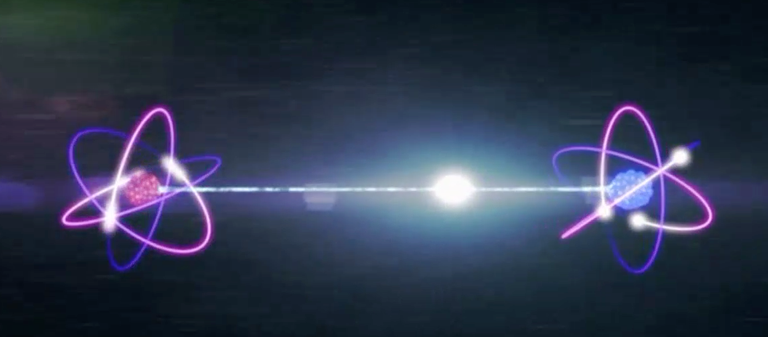
Quantum entanglement is a very weird behavior scientists noticed when they were scribbling away like mad, watching the behavior of subatomic particles in different experiments
In order to understand quantum entanglement, you also need to know that every subatomic "particle" is really just a focal point of intensely vibrating energy. Like I said when I started, everything in the universe, down to the tiniest building block of reality, is constantly in motion.
Every subatomic particle that scientists have been able to observe the behavior of has certain characteristics. Electrons are the simplest to talk about, so I'll use them as the example.
As you know, from your basic science classes, an electron has an electrical charge. However, an electron also has what's called "spin."
This is a very simple word for a complicated characteristic. Like I said, a subatomic particle is actually more of a focal point of intensely vibrating energy. And that energy "vibrates" in a way that is predictable. This is more than just simple wave behavior (so pardon if I don't explain it completely).
"Spin" is the term scientists settled on to be able to talk about this one predictable way in which a subatomic particle is in motion. A subatomic particle "moves" in many different ways, but "spin" is predictable.
It's sort of like electrical charge. You can have a positive or a negative charge. There isn't such a thing as "purple charge" --- it's binary. Positive or negative.
Well "spin" is also clearly defined. There are certain options for spin, and every subatomic particle has behavior that puts into one type of spin or another (it's not exactly binary, but we don't have to go into that).
Now the weird thing scientists noticed, was that some sub-atomic particles seem to "talk" to each other. In certain experiments, when a scientists "poked" one subatomic particle and made it change it's spin, another subatomic particle nearby spontaneously and instantaneously changed it's own spin to perfectly match the particle the scientists had been poking
Now, a bunch of experiments and really really complicated math later.... scientists realized that if they can control the "spin" of sub-atomic particles, and use that control to effect the "spin" of the particles that are entangled with those, they suddenly have an incredible tool to use.
All of modern day computing is based on binary, right?
Well, "spin" is a lot like binary, except you have more variables to play with (because like I said, it's not actually strictly binary).
So the advantages to quantum computing are not just all about "speed." (Although the "time" aspect of these spin-changes is a very interesting part of it that I haven't even addressed yet because it dives into string theory and other fun stuff). The advantages of quantum computing are not only the speed of the entanglement "communication" of data, but also the complexity of the "binary" strings that can be used.
Here is a great little article that explains why quantum spin allows more complex information to be coded into the "binary" since spin is more than just binary and increases the complexity of the strings themselves: https://phys.org/news/2016-07-quantum-room-temperature-mothballs.html
"A quantum computer uses a sequence of quantum bits, or qubits. They can represent information as 0 or 1 or any of a series of states between 0 and 1, known as quantum superposition of those qubits"
So not only is computing speed faster (because quantum entanglement is instantaneous) but the complexity of the information that can be communicated is exponentially increased.
PHYSICS... isn't it awesome?

Fair warning -- parts of this are so over-simplified, I have transcended simplicity and am soaring through the fields of "technically incorrect"
If you are curious and want to really understand what the whole "Schrodinger's Cat" is really all about, this is a good article that gets it right: http://www.iflscience.com/physics/schr%C3%B6dinger%E2%80%99s-cat-explained/
I just chickened out when I was trying to think of a way to build off of wave/particle duality and explain quantum superpositioning to a high school student. So I left out a (very) important part of the story.
And quantum computing is only "faster" in certain applications. Real life is never the same as the theory. In the real world, you have to pay attention to such pesky things as temperature (and that's just scratching the surface). So although the theory of quantum computing speed potentially being "faster than the speed of light" is fascinating, pointing to the way quantum entanglement disrespects time and the "speed limit" of the speed of light, the reality is more complex.
So if another particle physicist comes along and says "um.... no.... that's.... not right...." I have to laugh pre-emptively and say "yes, I know" and invite that hypothetical physicist to explain everything from the wave/particle duality to quantum computing to a high school student, at the drop of a hat, live.
Seriously, I'd love to watch/listen. I'm always delighted to learn better ways to do things. Plus.... Physics is awesome!
Hi, it will be great if you can site your image sources and references for possible curation. Thanks. :)
Sure... I just wrote it up for fun. What's this "curation" business?
Hi, it is groups who upvotes original contents with proper references and sources. I am just suggesting though. :)
I received a follow up question from the high school student, wondering why scientists can't look at subatomic particles. Why can't they just X-Ray them or something.
The answer is really kind of fun, so I thought I'd share it here as well.
PART I:
"Inside the World's Most Powerful New Microscopes"
PART II: http://www.bbc.com/earth/story/20151120-how-do-we-know-that-things-are-really-made-of-atoms
"How do we know that things are really made of atoms?"
PART III: "The small size of subatomic particles is perhaps most convincingly expressed not by stating their absolute units of measure but by comparing them with the complex particles of which they are a part. An atom, for instance, is typically 10−10 metre across, yet almost all of the size of the atom is unoccupied “empty” space available to the point-charge electrons surrounding the nucleus. The distance across an atomic nucleus of average size is roughly 10−14 metre—only 1/10,000 the diameter of the atom. The nucleus, in turn, is made up of positively charged protons and electrically neutral neutrons, collectively referred to as nucleons, and a single nucleon has a diameter of about 10−15 metre—that is, about 1/10 that of the nucleus and 1/100,000 that of the atom. (The distance across the nucleon, 10−15 metre, is known as a fermi, in honour of the Italian-born physicist Enrico Fermi, who did much experimental and theoretical work on the nature of the nucleus and its contents.)" From the Encyclopedia Britannica, https://www.britannica.com/science/subatomic-particle